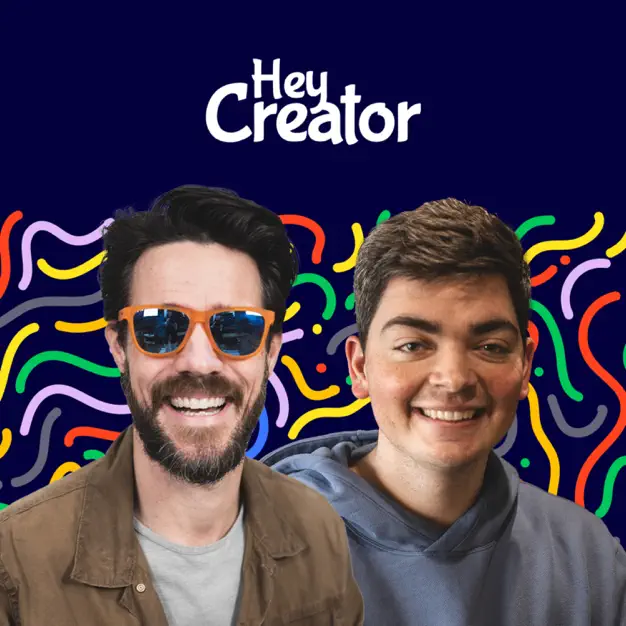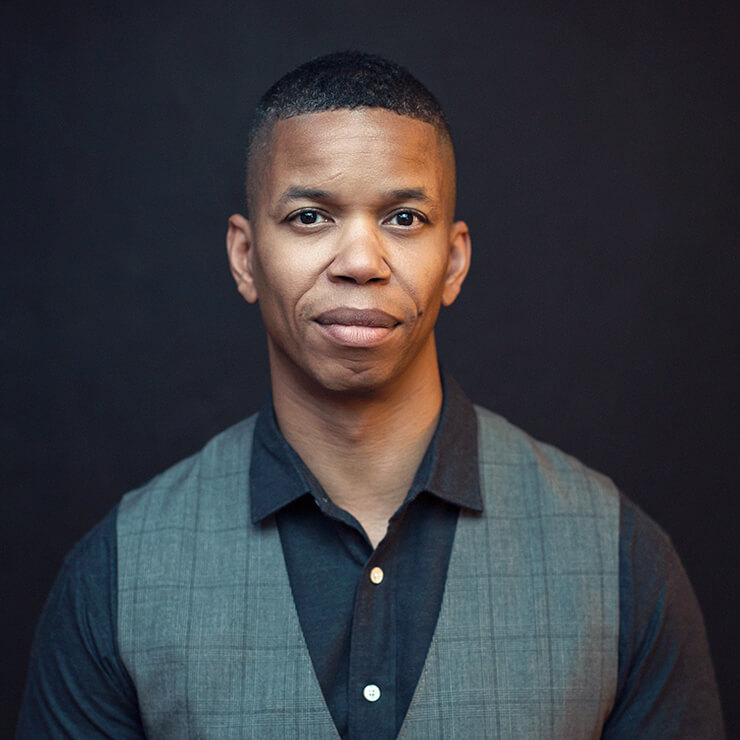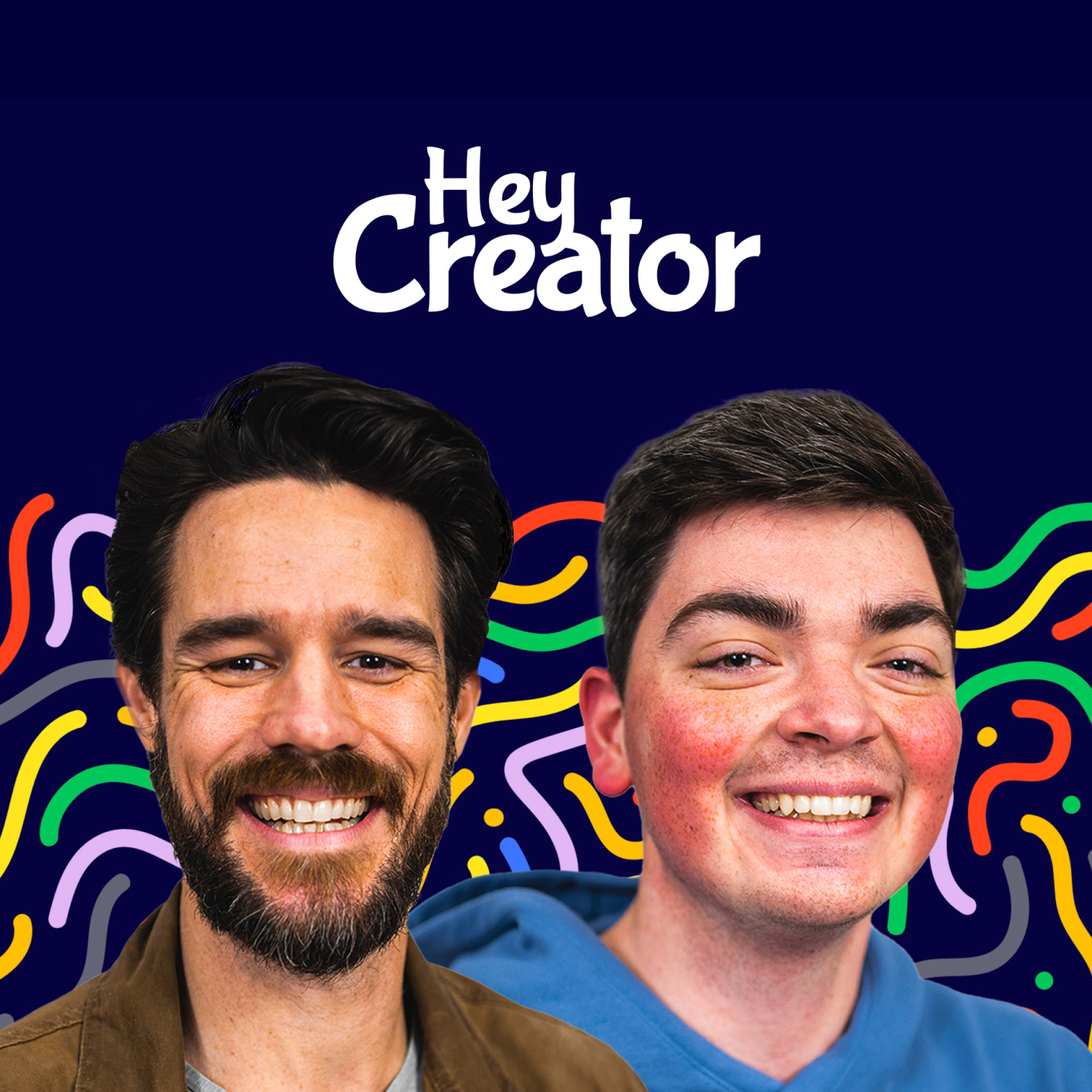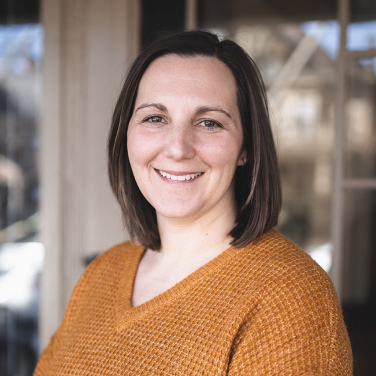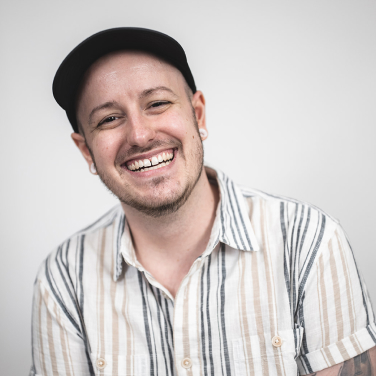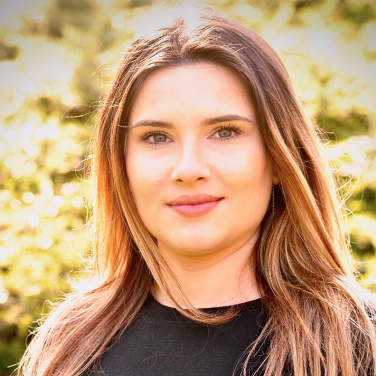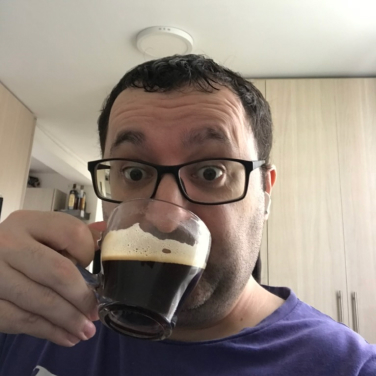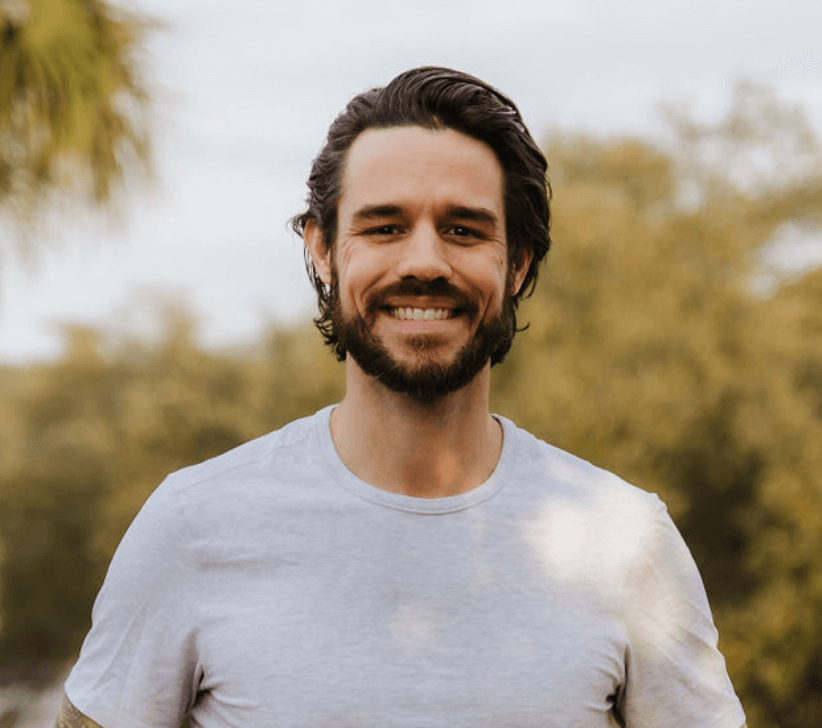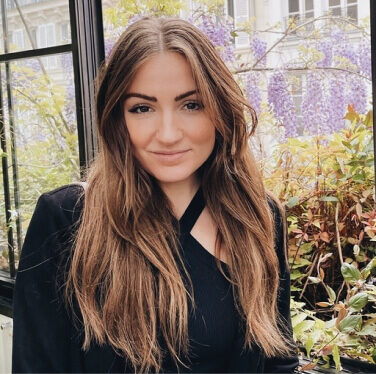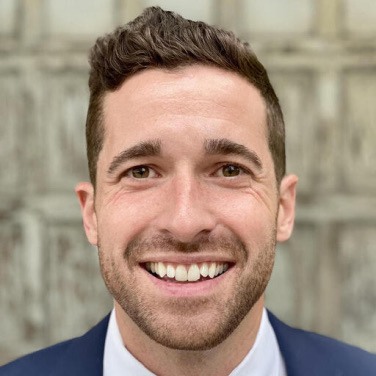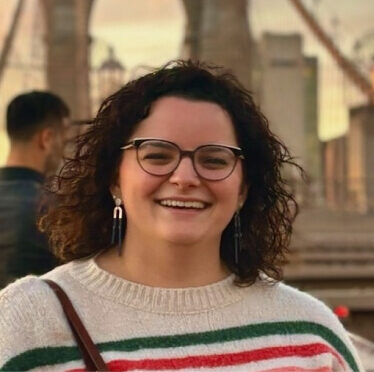[00:00:00] Tim Forkin: How do you create content for your favorite brands and get paid the big bucks? The truth is you already can, and you’ve probably left a lot of money on the table. Don’t worry because today we’re going through the creator’s guide to brand partnerships and licensing, and we got our guy Terry Rice to help us.
Just one yes
[00:00:15] Terry Rice: from an organization can make you a lot of money. And if you can find a content gap that they have in regards to what they’re providing to their, their current audience.
[00:00:24] Tim Forkin: He’s our director of growth and partnerships at HeyCreator, and he’s spent over a decade in business development. So he was the perfect person to walk Matt and I through these two unique ways that creators like you and I could be making a lot more money.
Terry, the first time that
[00:00:38] Matt Ragland: I really, the first time I met you, but the first time that I saw you speak was on stage at ConvertKit’s Craft and Commerce Conference in 2023, so just last year, and you were talking about partnerships And licensing as a creator, and that is something that I’d heard a little bit about, but it sounded like it was something that would, when I had thought about it before, it was like, Oh, this is more for like B2B or for consultants or something that was like more academic.
It didn’t seem like something that was applicable to me as like somebody who like helped people with productivity or at the time was like helping people build creator businesses. And so I wanted to have you on the show to talk about this because it really opened my eyes to this, like this huge, like revenue opportunity, this great, like business building opportunity that I hadn’t given much thought to before.
And now it’s like something that I consider to be a really important part of the business just a year later.
[00:01:31] Terry Rice: Well, yeah, well, I’m glad you’re having me on to chat about that. And I think. A lot of our creators that are listening, it’s going to be an eyeopening experience for them. So, um, so yeah, let’s, let’s dig into
[00:01:40] Matt Ragland: it.
One of the things, like, can you just explain like those two like elements of it, like what, what can a creator look at when they’re thinking about partnerships or like, can you even like define, like, what does a licensing opportunity look like? Because like, before I saw you speak about it, it just seemed very vague and something that I didn’t know if it was very applicable to me, but now I know that it is.
So can you like define and kind of set the terms around it?
[00:02:04] Terry Rice: Yeah. So you want a real answer? Um, yeah, happy to do so. So, um, I’ll separate the two because they actually are different. So when I think of brand partnerships, there’s a very common misconception that creators think, and that is they have to have a bajillion followers to be useful to a brand and we have to separate, uh, creators from influencers.
So creators are people just like you and I, right? We create useful content for our audience. Influencers might do the same, but what makes them an influencer is they have a lot of followers, so they’re more or less a marketing channel. As a creator, you don’t have to be the channel. You just have to create great content.
And if you think about it, there are creators that work for organizations like right now, I’m wearing a Nike sweatshirt, right? There were creators that work at Nike and that’s their job. They don’t have to have a bunch of followers on Instagram or TikTok to be useful. They just have to create great content. So I think the more creators realize like that alone is your job, creating a useful content for a defined audience.
You realize all of a sudden like, wait, there’s a value in that no matter how many followers I have. And what I encourage you to do is to find. Organizations that you want to partner with who have what I call a content deficit, right? They want to serve an audience, but they’re missing certain content.
Maybe it’s how to videos. Maybe it’s instructional videos. Maybe it’s day in the life content and say, you want to serve this audience authentically. I’m already doing. So here’s a few examples. Let’s explore a partnership on how I can create content on your behalf. And if you get pushback where someone’s like, Oh, you only have 14 followers.
You can say, Hey, great. I knew that already. What I want to do is create content for you and you can use your existing audience to pump it out to and, or amplify a few paid ads. So don’t let that hold you back from realizing the value you have to provide, because you don’t have to be a marketing channel, you just have to be a content creator.
[00:03:49] Matt Ragland: Yeah. And I think that is such an interesting point because so many people, they think they can’t monetize or they can’t really create great content at, at scale or for a lot of money until they have a big, a big following. And so like you’re making that distinction, uh, outside of influence. And then there’s our current content creators.
So I think that’s really important. That’s something that I want people to pay attention to right away. It doesn’t matter how many followers you have, if you can create great content. And another thing that I think is really key here is that often we, as the creators can tell a story better than the brand might be able to.
And at the very least, even if we’re talking about like incredible marketing teams, like Yeti comes to mind for me as like a brand that I would like to work with one day, but I, you know, they’re great marketers, but I can tell. Their story through my experience and through my lens through my understanding in a way that they’ll never be able to.
So that’s another way to like. Present your expertise of content and story to a brand, even if you don’t have a big following, like the, the following may not even matter.
[00:04:57] Terry Rice: Yeah. And there’s a stat from, um, business insider that I don’t want to, I don’t want to butcher, but essentially consumers view UGC content user generated content as two times more authentic and believable than brand related content or content created by brands.
So if you, again, if you approach a brand and say, Hey, look, there’s like data that shows this stuff works better. In the minds of your consumer. That’s why you need me. And actually one of my clients, we actually tested this out. We are running ads, both paid, sorry, paid ads, both for UGC, as well as branded content in the UGC content works two times better than the branded content.
So again, you’re saying I am doing this for you, right? I’m doing your job for you. And what I also like to do is reach out to brands who have competitors that are already doing what you’re proposing. So you’re saying, look, your competitors X, Y, and Z are already leveraging creators with relatively small followings in this case to create content.
And here’s the impact it’s having on them, right? So saying like, I’m not just making this stuff up, right? I have third party validation through stats and through just observation that this stuff actually works. And that’s why I should consider partnering with me.
[00:06:01] Matt Ragland: Let’s go a little bit further along here.
And we could even like use, use me as, as an example. So I’m trying to think about, actually, this is a good example. So let’s, let’s stay on the Yeti example. Cause I, I have a following, I have an audience, but when it comes to the type of content that, uh, like Yeti might want to use very, very like outdoorsy, very adventurous, those are things that I like.
Those are things that I can create content about. It’s a good example because I don’t have a brand or a following that’s around that stuff. I have like a brand around creators and I had a brand around and a business around productivity, not like going out in the woods for a week. So if I wanted to approach Yeti, To do a partnership with them.
How would you coach me or guide me into like making that initial hour? Another one would be a Huckberry. Uh, I really like Huckberry as a brand. I would love to do some work with them. So how would you recommend that somebody like me, not a big following, let’s say for this specific thing, how would you help me get in touch with them and present a plan for creating a partnership?
[00:07:04] Terry Rice: So Matt, here’s what I would do. And I’m going to try to say this in a logical order, but I might jump around a little bit. It’s helpful to have a history of what success looks like. And by that, I mean, you’re creating some content where you and your Yeti are going out in the wilderness somewhere, getting a, like a nice drink or so on and so forth.
And then when you’re pitching, you can say, look, I’m already creating content aligned with your brand. I am a fan. Here’s an example of what I can do for you on your behalf. So that way it’s like, it’s so much easier for them to wrap their head around. All right. So that’s step one. Step two is. Do their job for them, right?
Do their job for them. Have an actual campaign in mind, not just saying, would you like to partner? But you can say, Hey, look, you know, I’m a father of four and we love getting outdoors during on the weekends. I can create a video of me and my family outside or all drinking water, staying hydrated and having a great idea, having a great time, right?
Or father’s day’s coming up. Right? So same thing. Like, here’s the theme. Here’s this active dad out with his family, drinking water, staying hydrated, having a blast. So. Just remove any kind of doubt, uncertainty from their mind from the get go, because often when I see people pitching brands, they’re just like, I would love to collaborate.
Okay, great. A lot of people would like to, but if you’ve done my job for me, if you’re making sense by saying, here’s the exact strategy of a campaign I can put together, even if they reject that, they’ll see you more as a thought partner and not a vendor. And that alone can accelerate you getting accepted as a partner.
And also what I do is I think about it, like what’s in it for them. Right. What do they want as a tangible takeaway? So when I write my proposals, I’ll say like, here’s how we’re going to measure success, right? These are the KPIs. Here’s how we’ll measure that here’s all executed against it as well. So I’m going back to my days as a digital marketer, when I’m doing these proposals, I’m being very specific of what success looks like, how we’ll measure it and how we’ll amplify it as well.
So I think if you just really just go try a little bit harder than the average person, I guess is what I’m saying. Like that alone will make you stand out. And as, again, if you can do their job for them, they’re like, Oh, sweet. Great. Like, I don’t think so much. I can just hire this person.
[00:09:04] Matt Ragland: Yeah. And whenever we’re, so I’d like to hear a couple of ideas that you have for KPIs that we could pitch, but there are things like certainly number of clicks to a specific link that you have, maybe a number of orders fulfilled.
It could be, it could be views, but I would think often when we’re talking about. Working with the brand, they want to see sales and they want to see like, they want to see interest. So those are a couple of things that could be tracked, but I’m glad you made the point of saying, uh, it gives us a good, it was a good call out to me.
And for anyone doing this is like, you should have already been creating the type of content that they could go to. Like the reason this wouldn’t work for me right now is that if they went to like follow my stuff on social, or they looked at my YouTube videos, be like, this guy’s talking about creator economy and, uh, productivity.
He’s not a good fit for, he’s not a good fit for talking about coolers and canteens. Now, what it could be, and what I’ve done before, especially for the productivity content, is going to find, like, I talk a lot about notebooks and analog action, note cards, journaling, and so if I went and found, say, like, bullet journal, or another one would be like, best self journal, like, all these different journal companies, like, could and have very Go out to them and say like, Hey, I’d love to review, review your notebook.
They, these are the kind of views that I normally get. You can see the type of engagement that I’ve gotten from past campaigns with other partners. These are the types of things that I can, I can do for you here. So here are a bunch of examples.
[00:10:30] Terry Rice: Yeah, you’re, you’re right. But I want to go back because, um, we assume rightfully so that most brands want sales, right?
They want to get some kind of direct response, but in my experience, I was actually wrong in regards to one of my partners, because that’s what I said. Hey, look, here’s how we’ll track success. Here’s how many clicks we’ll get, how many conversions, so on and so forth. And they’re like, you know what?
Actually, we want to do this as a branding play. We’re not really concerned about making money directly from the content. And I was like, well, what do you mean? Like, you know, how do I prove ROI? Um, but that’s the way they want to go. And that was a 25, 000 contract that I closed with no like meaty KPIs beyond it, besides creating great content and the views behind it as well.
So, I mean, I think we should lead with that lead with value and say, here’s how we would do that. But also we’re having a conversation, right? You’re, you know, we’re pitching this and we’re saying like, here’s what we’re proposing. Let’s hop on a call and talk about it as well.
[00:11:21] Matt Ragland: I’m glad that you said that because like leading into like, Hey, here’s how I can see this pay off.
I think like one of our natural things when it comes to like leading with value is saying like, Hey, here’s the amount of money that I’m pitching to you as my value for this content. I’m going to be, and you got to think about this, no matter what size you have for your own audience, I’ll keep coming back to that.
What is the value that you’re bringing as someone who’s basically become a one person marketing team for them? That’s really valuable and important. How do you think about pricing? I know, like, and giving them enough value that you can lead with, regardless of what the KPIs, the key performance indicators end up being, how have you thought about pricing relative to the brands that you’re pitching and wanting to partner with,
[00:12:05] Terry Rice: it took me a while to charge my true value.
And I think a lot of creators have this problem because it’s like, like someone reached out to me in regards to creating a LinkedIn post on their behalf. And I’m like, well, I do that every day anyways, you know, so it’s like, it’s sometimes you feel like there’s not as much value when you do this on a daily basis as it is.
And that’s why it’s beneficial to ask around and ask other creators, how much are you charging for your work and having very real conversations that are sometimes uncomfortable, but seeing how much they’re charging in the market. And I was very fortunate to ask people that were in the industry. Uh, how much they’re charging as well as people that actually work for companies that, that hire creators, right.
And the saying like, what do you pay? So the more input you get, the more confident you will feel in charging your true value. So you should feel a little scared, a little nervous when you’re pitching. And if you hear yes, all the time, that’s actually not good because it means you’re undercharging, right?
There should be some kind of negotiation, some kind of friction. And the way that I structure my contracts, not or my proposals, not to get too detailed is I’ll have like five things I can deliver. So five things are going to charge you 20 bucks for it. And they might say yes to only three things. So I make six bucks, but at least I gave my chance myself a chance to make the full.
I’m out that I wanted to, so give them something to say no to besides everything. And sometimes you’re saying stuff you don’t even plan on doing, like, Oh, also babysit your kids, you know, whatever, like so forth, but I’m very
[00:13:28] Matt Ragland: interested to that if anybody wants to partner with me and they can babysit my kids, that’s, that’s great.
Yeah. Yeah.
[00:13:33] Terry Rice: I would as well. Um, but that’s the way to structure your proposals. Like say like. Yeah. Like say like, you know, I’ll make a video for you. I’ll also write blogs that are associated with it. Um, I’ll also do some kind of audio content, like whatever it is, like just add all these things on. They might only say yes to three of the five elements, but at least, you know, you’ve pitched yourself with the full value that you
[00:13:52] Matt Ragland: can.
That’s such a good point. And it’s something that I didn’t learn until like going through some of your content. And also our mutual friend, Justin Moore talks about this a good bit as well. The creator wizard himself. And so I did this in the last sponsorship that, that I booked where I said, Hey, I can make YouTube videos for you, but I can also host a webinar on your behalf.
I can also like. Put you in my weekly newsletter. I can also do like a demo for like a small group demo for like top customers who might be, might be interested in using your service. These are all these things. So I had like, you could almost think of it like gold, silver, bronze, uh, like the different tiers that you could offer.
And that way, not only are you maximizing your value, you’re also giving like a strong anchor point. Even to like. What you think is like the bronze level because like for me for a long time I was like, oh, you know like a couple of youtube videos thousand bucks I guess even that felt felt like a lot but now like i’ve pushed that bronze up to like two or three thousand dollars And it makes sense.
It’s help anchored by the fact that like Silver and gold are up around like the 10, 000 mark. So even if people only want to only want to work with you for a few thousand dollars, then they feel like, Hey, this is, this is a really good bargain. I see how this is like all structured. So that’s something that I hope people think more about.
Like what other value can you provide beyond just like what you think your core offer is?
[00:15:19] Terry Rice: Yeah. And let’s, let’s stick here for a moment because I love giving people tactic level information they can immediately apply. And if anyone wants to get a sample proposal from me, just reach out. I’m happy to do so.
It’s at it’s Terry rice on social media, but Matt, your point saying, Hey, I’ll do a webinar for your community. Great. Good idea. I would have that in the proposal, but I would also say I would suggest having this available on an evergreen basis. And gating access to it, that way you can leverage it to generate leads going forward and also takes clips from this webinar, put them on your social media to drive traffic to that landing page.
Therefore, you have this really good cycle of getting people off of social and onto your newsletter. So just literally is doing all the thinking for them. And even if they don’t like the idea, they’re like, okay, this person is trying to help me out, not just create content, but build a strategy that is going to help me monetize what they’re doing.
[00:16:06] Matt Ragland: Let’s shift a little bit and talk about the other part of this, which is licensing, which you, you made the distinction early on. And I’m glad you did like, Hey, these are different things. So let’s talk about licensing and how that is different and still something that creators should be thinking about for their content and for their business.
[00:16:22] Terry Rice: Yeah. So licensing, when I refer to that, I’m typically talking about licensing an online course and Matt, this actually happened on accident. I’ll just kind of share my experience. My, uh, my college, the university at Buffalo wanted me to do a series of workshops for their students in regards to how to launch a business and their rate.
They’re willing to pay me. It really didn’t make sense for me to do a live series of workshops. So I said, look, I got an idea. Yeah. I have this course that covers the exact same topic. How about I sell that to you for the semester? You can go ahead and share with the students. I’ll come in at the end of the semester and do a Q and A session.
How’s that sound? And they’re like, well, that, that actually would work better that way. They can do it asynchronously and we don’t have to pay you as much and we’ll still get, you know, you live afterwards. So I was like, wow, this is a thing, you know, like I’m licensing this course and like, it was like kind of a janky start to it, but then I reached out to other organizations and I said, Hey, look.
I would love to help your, your organization. There’s two options. One is this very expensive workshop, which by the way, I really don’t want to deliver, or you can just buy this course and you can have it at your leisure. Uh, everyone can take it at their leisure going forward for up to a year. So I was like, dang, you know, it’s from this one course that I created that I sell to individuals for 150 bucks, I can now license to organizations for 15, 000.
And therefore make money essentially, I don’t see in my sleep, but like after, you know, just pushing a button and giving them access. So any course creator out there who’s not currently licensing, you’re leaving money on the table and you’re making it too hard for yourself to generate revenue because one, yes.
From an organization. Could be worth 10, a hundred times more than it is from an individual. And you might not have to work as hard as you think to do it. So right now I’m currently pursuing the New York city public library system to license my course to them. Cause if I get a yes to that from them, first of all, that’s bank.
Second of all, I can then reach out to Miami, Denver, Houston, whatever, and say the same thing, right? Would you like to license my course? That feels really good, but again, it’s the same course that can sell to all of you for 150 bucks. Or sell to Miami for 150, 000.
[00:18:27] Matt Ragland: Yeah. And that’s, that sounds amazing. And it certainly gives me lots of ideas because the thing that you’re saying is like, you, you don’t even, maybe you have to change the course, like 5%.
If you want to like make, make a, make a little bit of like changes relevant to, to the client, to the organization that you’re selling it to, but yeah, we. We talk about the value ladder sometimes here and how often at the beginning, it can be easier to, well, it almost always is easier to get one person to pay you 10, 000 than it is to get a hundred people to pay you a hundred dollars.
I think that math works out, but you get the idea of it. It’s like the same, it’s the same thing here. Like to get one organization to buy your course and distribute it to all of their. All of their members, all their employees, all their constituents, whatever it is. And then you have, you, you refer to this, like, then you have a case study.
Like this worked really well for university of Buffalo. This worked really well for the New York public library system. You can do the same thing with your system, with your employee, with the people that, that you’re working with is to get a little more tactical on it. Like, just like we talked about with, uh, partnerships, how are you making that initial outreach?
How do you think about. Potential partner or organizations that you could reach out to, that would be good licensing candidates.
[00:19:45] Terry Rice: Yeah. I mean, everyone listening, you know, your audience better than I do in the organizations align with it better than I do. So that’s kind of a cop out answer, like figure it out yourself.
Um, but that’s what I think about. It’s like, yeah. Well,
[00:19:55] Matt Ragland: how, how did you go after the, like the libraries or other universities that you might like want to reach out to? I know you said it was like kind of an accidental start, but
[00:20:02] Terry Rice: yeah. Well, I think about it this way. I mean, universities cannot easily keep up with, The current needs of students, right?
Cause it takes so long for them to change the curriculum. So it doesn’t matter if you’re teaching like design, digital marketing, entrepreneurship, so on and so forth. It takes forever for them to catch up to the trends and, or they’d have to pay a, an instructor to lead these courses. Right? So in my end, I think pretty much any course you’re selling.
A lot of courses are selling would be a good fit for college and universities, right? So that’s the way I think about it. Um, or maybe there’s like niche organizations that your audience might belong to. And I’ll give you an example. I know this one woman who helps people, uh, build urban chicken coops. So she has an online course about building urban chicken coops, right?
Which I know is quite unique. Um, but she can reach out to any Metro and say, Hey, if you have people in the area who might want to build their own urban chicken coop, I have this course that you can license and sell to them. Maybe you’ll attract more people who are moving to big cities, but don’t want to leave like their, you know, suburban or rural life behind so on and so forth.
[00:21:03] Matt Ragland: I’m pretty sure in most cities, like this got me thinking. Cause like my, my wife would sign up for that. My wife would sign up for that, but I’m pretty sure like you have to declare, you have to get like a chicken permit, uh, even like living in Metro Nashville. And so it’s like, Hey, who do you have on file?
That you could send this to that has already paid for their chicken permit. Like this is like a really good, uh, value add for those people. They’re like, not only when you get your chicken permit, but you also get this online course on how to create your own urban chicken coop.
[00:21:35] Terry Rice: There you go. Yeah. So, I mean, Yeah.
Or like, let’s go deeper. Right. So maybe there is a chicken coop distributor you can reach out to and say, I’d like to license my course. That way, when someone buys your, your chicken coop kit, your chicken coop kit, um, they also get my course. Right. So,
[00:21:51] Matt Ragland: well, we can go even further on this. Uh, we’ll just do one more because like a lot of times producers slash cohost him and I talk about this.
We talk a little too much sometimes about creators, helping creators make more creators. And we don’t want to like get too much in that, uh, In like that cycle, I’m glad you brought up the chicken coop. Another one, like we have, uh, we have a client at good people. His name is Joe Spoo and he’s a veterinarian and he focuses on wilderness first aid for, for gundogs.
And one of the things that he could do, like, and he has a course. First, you know, field kit, first aid for gun dogs so that, you know, you can take care of your dogs as if anything happens while you’re on the hunt. He could license that course to like firearms, to rifle manufacturers, to people who make first aid, who make first aid kits for dogs.
He could do like all these different things. He could like even go to, uh, people who have like trade public. Publications for, for veterinarians. So there’s like, that was another thing that popped to mind for me. And these aren’t, you know, these aren’t people who are saying like, Hey, I have this marketing course, or, Hey, here’s how you can sell your, you know, sell your first thousand dollars or make your first dollar online.
This is like, these are chicken coops and, uh, veterinarians that, that can do these things.
[00:23:05] Terry Rice: Yeah. Yeah. And I think, um, there’s two things, like one is this leverage intellectual curiosity, right? Like, just like open up your mind and think, you know, who could I partner with on this? And another is this, you could also just use chat GPT, right?
Like say, Hey, I’m trying to sell this course. Like what are some horizontal or vertical organizations I can partner with, uh, that’d be a good fit and just let it rip. I mean, because from there, then you’re writing an email saying, Hey, I understand you help this audience. I have this course that can help them achieve this goal.
Would you like to talk about licensing it so you can just share this kind of information, which you currently don’t have for them. And I can fill this, I called it a, a content gap that you currently have in your strategy. So you’re just saying like, you’re helping these people. You’re missing this one part.
I can fill that gap. Do you want to talk? That’s just common sense. You know what I mean? They’re going to say yes or no, but it’s not like you’re pitching a wild idea that has nothing to do with what they do. It’s like, no, you’re trying to achieve this goal. You’re missing this one part. I can help you achieve this if you want to talk about it and then they’ll take it or leave it.
[00:23:59] Matt Ragland: There’s two things that I want to do before, before we wrap up. I want to talk, I want you to actually like coach me real quick on, on another thing, so I’m going to get free coaching here. Lucky me. Yeah, go for it. Going back to, because we have a community with HeyCreator that where, where you can talk about all these things.
Uh, one of the things that you mentioned is like, Hey, when you’re talking about partnerships, you’re talking about licensing, it’s helpful to ask other creators who have done these sorts of things. Well, that can happen in HeyCreator. So you can go to heycreator. com slash community, but it makes me think about also like, Where are some other like partnerships where some other license licensing opportunities that we have for the, HeyCreator, community, and content, the community, especially.
Cause I wonder like, there are like kids in college who need this information, who need like, maybe not a community, but like a, Uh, a series of resources, a course on how to like do these types of things when they get in, when they get out of college, how would you as like a part of HeyCreator, which you, which you are also, how would you approach a university and say like, Hey, I have all these resources.
I have experts that can talk to your students about this. What are some things that like I could do, we could do to like connect with more universities and students. Yeah,
[00:25:14] Terry Rice: I mean, I think your lead in was, was pretty good, to be honest, you could say, Hey, look, you know, there are a lot of students at your university who may be interested in becoming creators in addition to whatever they’re doing, maybe they want to do it as a side gig, or maybe they want to do it full time, you currently don’t have the resources to do so, we understand that, and we’d like to explore a partnership with you, where you bring in students from your university to our hey, creative community, and what I would say is, you know, It’s helpful to just get your foot in the door.
So maybe you would say, Hey, let’s do a webinar for them. Let’s do some kind of one off webinar to see how it goes. And they get some feedback from these students. Do they enjoy it? What do they learn? What do they want to learn more about? Because often when you’re like. Trying to make this initial, get this initial.
Yes. You want to make it as easy as possible for them to say yes. Right. So if you’re saying like, join this community is going to be great for the next semester, it’s like, Whoa, pump your brakes. But if you’re like, hold on, let’s do one webinar afterwards, we’re going to do a survey and see how it feels about afterwards.
We’ll do a survey, see how they feel. If it’s a good fit, we can maybe have a small cohort of students do it, right? Maybe just 20 as the beta group. If that goes well, and this is exactly what I did. If that goes well, then next semester. We open it up as well. Right. So it’s really just getting the foot in the door initially, having proof of concept and the scaling up from there.
[00:26:30] Matt Ragland: Yeah, that makes, that makes a lot of sense. It makes me even think about like, Hey, maybe do like the first webinar. And that’s just like a guest, a guest lecture as a part of like the marketing or the, you know, or the business college or maybe something in journalism. So that’s a good, good way to think about it from a, from a, HeyCreator perspective, add, I challenge anyone to think about like, what, what could that be for you?
So like, yeah, let’s, let’s go, let’s do another one
[00:26:52] Terry Rice: though real
[00:26:52] Matt Ragland: quick.
[00:26:53] Terry Rice: So we both have Sure microphones, right? So great. We sound amazing. Cool. We could reach out to sure and say, Hey, by the way, you have, you know, great microphones, great content, but you don’t have any kind of programming for these new podcasters within the HeyCreator community.
We can create an accelerator just for new podcasters. It’s going to be branded as, as, as sure, and it’s going to be, you know, freaking amazing. So, and so forth, you can send your community here beyond that. Our current community will still get exposed to you. And they might want to go ahead and purchase a Sure microphone as well.
Right. So it’s like saying we’ve already built a community. We can also build, we have the people who are interested in this. Yeah. So send more people our way. We can take care of them. And we can also nurture our current audience with this useful information too. So it’s like, man, like I just like making sense.
[00:27:39] Matt Ragland: I hope as y’all listen to this, like this just makes, makes too much sense to be able to do some of these things. So yeah, go give us, give us just like a quick recap of like partnerships, licensing, uh, how creators can think about them and a couple of simple ways to get started.
[00:27:54] Terry Rice: Yeah. So partnerships, I mean, I would just look around and look for products, apps, tools that you’re already using.
Right. So look at your phone, look at your desk, like. You know, think about your daily life. Like those are going to be the best opportunities for you to partner because you’re already the personified version of their audience, right? That you are that person who’s using their stuff. And when you reach out, you can authentically say like, here’s how I use it.
Here’s an example of how I use it. So, and so forth. And then when you pitch, like I said before, Don’t worry about how many followers you have whatsoever. Just say like, here’s an example of the content I can create, can create, or have already created. And here’s an idea for a campaign I have as well. That alone will get you through the clutter and you’re going to stand out way more than the average person who just like DMs them and says, I’d love to partner.
Um, that said, you know, DMing on social media is a good idea because it’s an easy way to get in front of the right person. But if you just have like a very clear path to how this makes sense for the organization. You’re more likely to get a response and a yes down the road as well. So that’s in regards to partnerships and then get it out of your head.
Like you don’t have to be a channel, just create good content. Like that’s it. Like you’re not Paris Hilton. Don’t worry about it. Right. Like just create good content. And from there you’ll be on your merry way. Um, in regards to licensing, realizing like, Hey, you already have very useful content to share.
Sure. Sell to individuals, knock yourself out. But gosh, you know, like just one yes from an organization can make you a lot of money. And if you can find a content gap that they have in regards to what they’re providing to their, their current audience, it’s a no brainer. They might still say no, they’re like, okay, we’ll figure it out internally.
But you’re just making sense. You’re saying like, you’re helping people do this thing. You’re missing this part. Would you like to buy it? And then from there, you might realize, you know what? I’m better off pitching 50 companies, getting a yes from three, as opposed to pitching, you know, 500 creators or individuals, and maybe getting a yes for the same amount of people.
Right? So. Just get over any kind of like self living beliefs you have about this because there are plenty of organizations that are doing this already. It’s not like a new concept that Matt and Terry introducing on this on this on this podcast, right? This is an existing thing. Companies are used to it.
And often what I found is they actually prefer it because that way their employees can take it or the students can use this content asynchronously. And then I don’t have to schedule the stuff as much. That’s what people love about this. They’re like, you know what, it’s so much easier. People can do it in their off hours, as opposed to trying to get everyone on the same call the same day.
So, and so forth. So realize you were doing them a favor by making it even easier for them to share this content.



